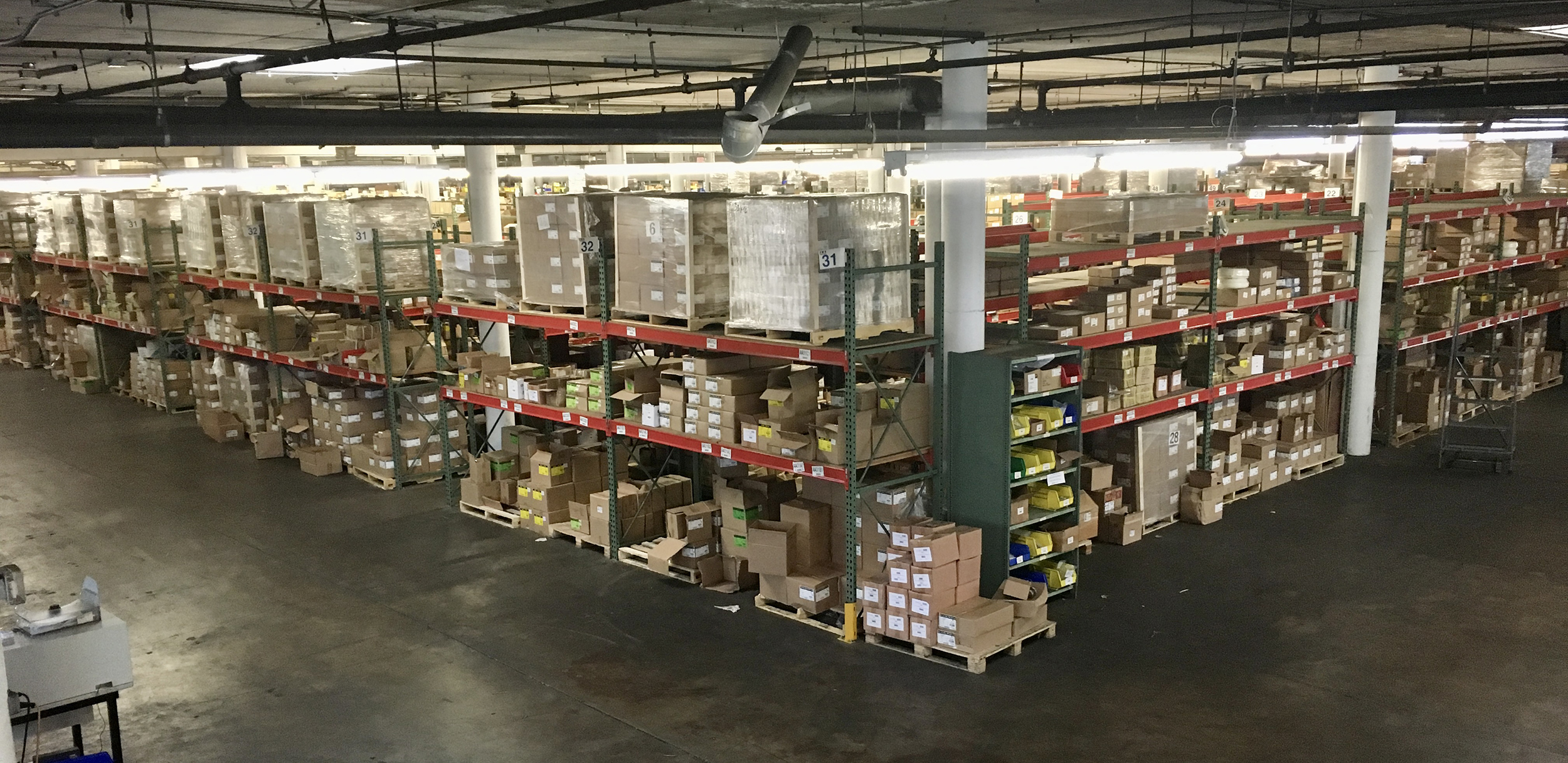Warehouses play a pivotal role in the success of any business, yet they are often perceived as mere cost centers. As the business landscape rapidly evolves through eCommerce, omnichannel strategies and changing consumer expectations, the importance of warehouses has grown exponentially. Deploying a modern multi-tenant, cloud-based warehouse management system (WMS) can help organizations meet today’s industry challenges.
Today’s Warehouse Management Landscape
To fulfill the demands of an evolving consumer base, warehouses are now expected to operate with greater efficiency, scalability and adaptability. Fulfillment speed, capacity and new fulfillment models like curbside pickup and same-day delivery have become the norm.
However, several challenges impact the performance of warehouse operations and challenge these new norms. Common challenges include optimizing the picking process, improving inventory accuracy, responding to labor shortages, and managing complex third-party logistics (3PL) billing processes. Furthermore, as eCommerce increases returns, a streamlined reverse logistics strategy is necessary to maximize profitability.
Adopting New Business Models
The global pandemic has forced businesses to rethink their fulfillment models, particularly in direct-to-consumer, omnichannel fulfillment and eCommerce. This shift, combined with innovative manufacturing technologies, suggests that warehouses could play a more direct role in production, reducing the need for extensive on-hand inventory.
Automation, including conveyor systems, shuttle systems, automated storage and retrieval systems (AS/RS), and autonomous mobile robots, are notable innovative technologies today and are becoming increasingly important to address labor shortages and enhance throughput. It’s crucial to have open integration with warehouse management systems to unlock the full potential of these technologies.
Furthermore, comprehensive data analytics in warehouse operations are essential to achieve operational excellence. Access to reliable data, integrated from various systems, enables informed decision-making and adjustments. Modern analytics systems streamline reporting and provide valuable insights to address labor and inventory layout challenges.
The Cost of Outdated Technologies
Many organizations are hindered by outdated warehouse management systems built on obsolete technology stacks. Open integration capabilities are crucial to connecting various tools and technologies for better coordination and execution. Scalability and adaptability are essential to managing seasonal demands and expansion into new facilities.
Staying with heavily modified on-premises solutions can have significant financial and operational drawbacks. The costs of not transitioning to modern, cloud-based solutions include:
- Maintenance costs: On-premises systems often require significant ongoing maintenance and upgrades, which can be costly and time-consuming.
- Scalability issues: In a rapidly evolving business environment, on-premise solutions may struggle to scale efficiently to meet increased demand, leading to potential losses in revenue.
- Limited agility: On-premises systems are often less agile and adaptable, making it difficult to quickly respond to changing market dynamics and customer expectations.
- Data security: Cloud-based solutions typically offer robust security measures. Failing to migrate to the cloud may leave sensitive data vulnerable to security breaches.
- Operational inefficiencies: Outdated systems can result in inefficiencies, leading to increased operating costs, reduced productivity and missed opportunities.
- Lost competitive advantage: Competitors that embrace modern, cloud-based solutions may outperform those that stick with traditional on-premises systems.

Implementing Best Practices
Achieving operational excellence requires identifying areas for improvement within warehouse management processes. Developing a strategy for implementing these changes, enhancing order fulfillment, improving service levels, and nurturing a workplace culture that empowers employees are essential to success.
Warehouses are no longer mere cost centers. They are critical to maintaining customer satisfaction and loyalty. Embracing the challenges and opportunities presented by the evolving business landscape through a modern multi-tenant cloud-based WMS, automation, analytics and adaptable technology is the path to operational excellence in the warehouse of the future.
Top 10 Essential Functions for a Multi-Tenant Cloud-Based WMS:
- Inventory management:
- Real-time visibility into inventory levels
- Inventory tracking, including lot and serial number tracking
- Inventory optimization for efficient space utilization
- Order management:
- Order processing, including order picking, packing and shipping
- Wave and batch picking for improved efficiency
- Automated order routing and allocation
- Labor management:
- Workforce planning and performance tracking
- Labor tracking for cost management
- Labor optimization through task allocation
- Receiving and putaway:
- Efficient handling of inbound shipments
- Putaway optimization based on inventory levels and demand
- Cross-docking capabilities for faster distribution
- Picking and packing:
- Dynamic and optimized picking strategies (e.g., wave, zone, or batch picking)
- Packing customization and compliance with various packaging requirements
- Integration with pick-to-light, voice picking or other automation technologies
- Shipping and distribution:
- Efficient shipping processes, including carrier selection and labeling
- Real-time tracking and reporting for shipments
- Compliance with diverse shipping requirements and regulations
- Returns and reverse logistics:
- Streamlined return processes
- Inspection, refurbishment, and restocking of returned items
- Reporting and analytics for returned items
- Slotting and space utilization:
- Dynamic slotting based on product velocity and demand
- Optimized use of storage space, minimizing travel time
- Reslotting capabilities for seasonal changes
- Analytics and reporting:
- Comprehensive data analytics for insights into performance
- Real-time dashboards and reporting tools
- Customizable reports for better decision-making
- Multi-tenant cloud capabilities:
- Scalability to support multiple tenants in a shared cloud infrastructure
- Role-based access control for secure data sharing
- Compliance with data privacy regulations for all tenants
Adapting to Future Business Requirements
A top-tier multi-tenant cloud-based WMS offers these core functions and the agility to adapt to evolving business requirements, seamlessly integrates with other supply chain systems, and offers advanced analytics and visibility across the entire distribution network. These capabilities are essential for organizations looking to thrive in the fast-paced world of modern warehousing and supply chain management.
Related Posts
-
The program caters to professionals in the construction and industrial space and will take place…
-
The alleged conspiracy stretched from January 2021 to April 2023.
-
Where is your team today in the skills and capabilities that will define your future…






